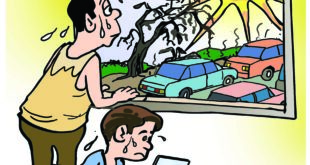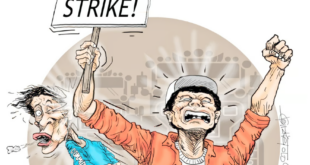We cannot allow ourselves to be lulled into a false sense of security by statistics that do not reflect the grim truth.

Despite claims of a 27-percent decrease in crime incidents, the reality on the ground tells a different story — one of fear, uncertainty, and a growing sense of unease.
Former Philippine National Police Chief General Benjamin Acorda Jr. announced a decline in January-February 2024 compared to the same period last year, with index crimes down by 993 incidents from 3,573 to 2,580 and the dismantling of 18 criminal groups.
President Ferdinand “Bongbong” Marcos Jr., in his speech at the recent oath-taking of star-rank PNP officers at Malacañang Palace, expressed his elation that the gains did not compromise the rule of law or did not resort to legal shortcuts.
Given that crime statistics are often used as a measure of safety and security, the recent reports of disappearances and deaths in places like Cebu and General Santos City have thrown a wrench into the narrative of decreasing crime rates.
In the eerie stillness of 31 January 2024, at 7:12 p.m., a heart-breaking discovery shattered the peace of the mountainous Cebu City barangay of Malubog. The lifeless body of a 20-year-old Grade 12 student, missing since 6 January, was unearthed, his body already succumbing to the cruel grip of decomposition.
A seven-year-old girl, initially reported missing, was discovered dead and abandoned in a secluded area in Barangay Conel, General Santos City. The Grade 2 pupil was believed to have been raped and then strangled to death with her own clothes by her assailant.
A missing 19-year-old Niña Fuentes Arpon was tragically discovered dead. Her lifeless body was found along the Mactan Channel, near Shell Island in Cebu City, just two days after her disappearance.
The disappearance and subsequent deaths of individuals have raised serious questions about the accuracy and reliability of crime statistics. How can we trust that crime is decreasing when people are vanishing without a trace and turning up dead under various circumstances?
What’s going on behind the scenes? Are we looking at a case of numbers being cooked up to show a picture rosier than the reality? Is there something more sinister lurking in the shadows of these seemingly positive statistics? How can we feel safe when those tasked with protecting us seem unable to prevent these tragedies from occurring?
Call us skeptical, but something doesn’t quite add up here. Isn’t it like trying to fit a square peg into a round hole? It just doesn’t make sense.
Statistics can be tricky and can paint a certain picture, but when reality hits us with headlines of missing individuals meeting grim fates, we can’t help but get the shivers.
Crime statistics are like a puzzle, but sometimes a few pieces are missing, or maybe they don’t quite fit where they should. Yes, we’re talking about underreported crimes sneaking under the radar and messing up the big picture. Just like trying to count all the cookies in the jar when some keep disappearing mysteriously!
Sometimes, the puzzle gets mixed up with misclassified crimes. It’s a mess trying to assemble a jigsaw puzzle with pieces from different sets. Misclassified crimes can make it seem like we’re looking at a peaceful meadow when there’s a lion prowling in the grass.
Are we truly experiencing a decrease in crime, or are we simply turning a blind eye to the unsettling realities of violence and danger that continue to plague our communities?
We cannot allow ourselves to be lulled into a false sense of security by statistics that do not reflect the grim truth of what is happening in our streets and neighborhoods.
There’s more to the numbers than meets the eye. The time for complacency is over; it is time to see through the smoke and mirrors and paint a clearer picture of the crime landscape.
*****
Credit belongs to: tribune.net.ph
 Atin Ito First Filipino Community Newspaper in Ontario
Atin Ito First Filipino Community Newspaper in Ontario






